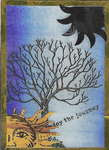

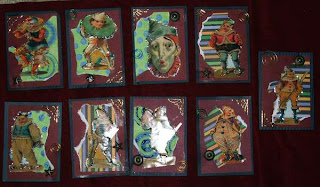
SO today is is a day to learn about something new, and since everyone is at different levels of paper crafts, I thought...ok how about an ATC ( artist trading card) these lil beauties are amazing, quick and easy to make, and oh so much fun to do.. SO here is everything you ever wanted to know about making ATC's.... *************************************************************************************
As their name indicates, ATC are collectables, a brilliant idea born of the older sports-themed trading cards. The one rule that makes an ATC derives from their origins: the dimensions of the ATC must be 2.5"x3.5", or 64x89mm.
To this rule are appended a couple of conventions. First, an ATC mustn't be sold, only exchanged, as the whole essence of these tiny works of art is about artists meeting (by correspondence or online if need be) and exchanging their works, thus meeting many artists and getting exposed to many personal styles. Second, on the back of each ATC the artist writes part or all of the following information: name, contact information, title of the ATC and number (1/8, 2/8...) if it's part of an edition. By definition ATCs are made in limited numbers, often no more than one of a kind. Unique ATCs are called originals; sets of identical ATCs are called editions and are numbered; sets of ATCs that are based on one theme but that are different are called series. Don't be intimidated by the concept of small editions or originals: very few people are anal about this. What most collectors really want are cards that were made with care. Based on that, numbers are meaningless.
That's all! The above is all you need to know to start making your own ATCs. Common sense dictates that they should be sturdy enough to survive mailing, and of reasonable thickness (unless you specifically want them otherwise. Transparent card sleeves are useful to protect the cards if need be. This is particularly true if they can easily get smudged or if the medium might stick during transport.
*************************************************************************************
-> What to do with your collection: A popular solution are those nifty albums with 9-pocket sheets available for commercial cards. But many people also keep them in boxes so that they can enjoy taking them out and handling them as they flip through. Others collect them in panels or picture frames to display in their home. I've heard of people sewing a plastic pocket to their handbags to display a different card every week, and someone placing a card inside their name tag, turning it into a piece of unusual jewelry. Some even make special handmade books to display theirs. The sky's the limit...
*************************************************************************************
-> Signature cards: Many ATC artists create a "business card" ATC that features a self-portrait on the front and a fact sheet about themselves on the back. They then send it out with sets they are trading. This is a lovely idea that allows artists to get to know each other more. Make it good -- this is your image in the ATC-trading world!
-> Design issues to consider: My personal piece of advice before you start would be: as you sit down to create your own cards, don't think of them as works of art scaled down. Many stamp designers make this mistake when they create stamps for the postal office. Think at the scale of the card, don't go into techniques that are only suitable for larger projects, but on the contrary think of what the small size allows you to do that wouldn't be otherwise possible. You know how a group picture becomes so uninteresting when scaled down too much, because you can't even see faces anymore? This is an example of a subject that would be wasted on a small siz
e.
























































































































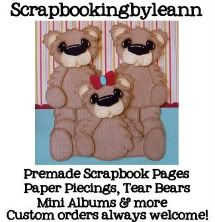










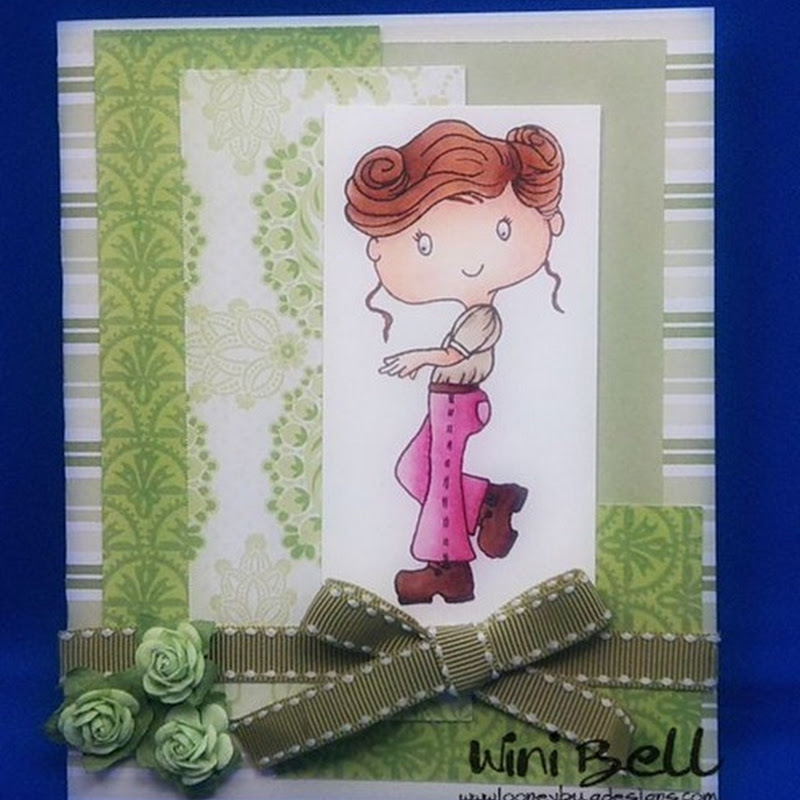



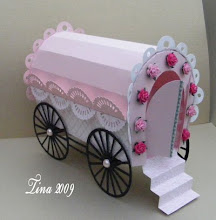











No comments:
Post a Comment